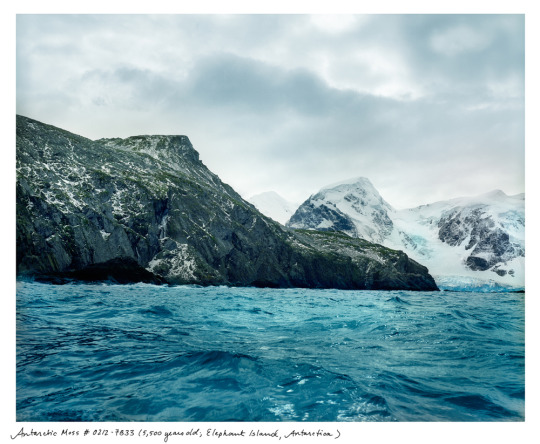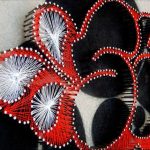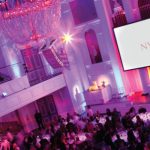A Conversation with NYFA Fellow Rachel Sussman
“I then traveled all over the world- to every continent- to find these ancient beings.”
Do you ever ponder the existence of extraterrestrial beings? Artist Rachel Sussman does. A 2013 NYFA Photography Fellow, Rachel is a featured artist in our curatorial collaboration with Artspace, a partnership designed to help artists connect with new audiences. To celebrate this connection, we recently talked with Rachel to learn more about her past, present, and future work. And we were quite intrigued at what we heard! Rachel Sussman phones NYFA:
NYFA: If you could tell people anything about your work, what would it be?
RS: To date I’ve been most known for The Oldest Living Things in the World. It is a transdisciplinary work: part art, part science, part philosophy. It’s a very long term and in depth project that spanned over 10 years during which I researched and traveled to find and photograph organisms that have been alive for 2000 years or longer, 2000 years being my minimum age.
My process involved doing research to first figure out what I was looking for, followed by tracking down published scientific research papers, and then contacting scientists who study these different organisms. I then travelled all over the world—to every continent—to find these ancient beings. The philosophy of The Oldest Living Things in the World is centered around creating a sense of connection to deep time—to connect with a timescale that is outside of our everyday human experience through anthropomorphizing these ancient individual living beings. I now have a traveling exhibition, and created a book featuring photographs and essays on my 30 different subjects, along with infographics including a deep timeline, world map, and Linnaean taxonomy. The book came out on Earth Day, 2014, and the exhibition will be at the Hotchkiss
School Tremaine Gallery from January 23rd through early March, 2016
NYFA: You used modern technology to create The Oldest Living Things in the World- cameras, computers, the internet, etc. How do you view the relationship between your ancient subjects and modern technology?
RS: The Oldest Living Things in the World is fundamentally about deep time and long-term thinking. There couldn’t be a more critical time to connect with these ideas given how fast technology is evolving. There are constant distractions—shiny things clambering for our attention 24/7. It’s essential that we take a moment get outside of the quotidian human experience, to tap into a time scale that is foreign to us. Building upon that, engaging in long-term thinking is a moral and ethical question. We’re part of a continuum, and the here and now carries into future. Every moment matters, and is part of the fabric that makes up the larger whole. We have to remember that we’re all interconnected.

NYFA: How does your artistic side interact with the scientific scope of The Oldest Living Things in the World?
RS: I really approach this work conceptually. There is a physical documentary aspect to it that is important, but it’s different from conservation photography. The goal isn’t to show change—rather, it’s a time capsule, suffused with temporal layering. It took tens and sometimes even hundreds of thousands of years for these organisms to reach the age they are in the present, held in tension with the split-second exposure click of the camera shutter, with me as the photographer, and the audience experiencing the images falling somewhere in between that timeline. All three of these time scales exist simultaneously in the work, creating a temporal palimpsest that travels into the future.
NYFA: As a kid were you really into science?
RS: I’ve always had a very strong affinity for nature- spending time alone in the woods was very formative for me, and I attended a science-focused summer camp that certainly stirred my curiosity. But I was never specifically encouraged in that direction. I stumbled into my first experience of awe while looking at an atlas with a map of the solar system in it. It was the first time I thought “Wow, we are in space! The Earth is in space!”
NYFA: Do you believe in life on other planets?
RS: Interesting you should ask- I am just about to start working with SETI Institute [Search for Extraterrestrial Intelligence] as an Artist in Residence. I completely believe there is the potential for life outside of Earth. One of the things that surprised me most in my research for The Oldest Living Things is the connection to astrobiology, which looks at the origin and evolution of life on Earth and elsewhere in the universe. (Think microbes, not little green men.) There are theories that life here on Earth could have developed from a stray microbe piggybacking on a meteorite that crashed here. My favorite example of this is the stromatolites, made of bound cyanobacteria—part biologic (the bacteria) and part geologic (non-living sediments like sand and silt) —which first formed 3.5 billion years ago. Stromatolites perform photosynthesis, and did the job of oxygenating the planet. It took 900 million years. It’s plausible that bacteria originating in outer space crash-landed here, and set into motion the chain of events that would in turn set the stage for all life on Earth to come.
NYFA: What is next for you?
RS: After spending so much time pondering long lifespans, I found I kept returning to idea of going even deeper into deep time and out into deep space – as in outer space. I began exploring new ideas in this vein with the LACMA Lab last year in an umbrella I’m calling The Poetics of Space. I have a number of things in the works, ranging from site-specific installations, to work with light, to painting. At the moment I’m focused on making new works for two different exhibitions at MASS MoCA this spring. One is an enormous hand drawn timeline of the history of the universe, beginning before the big bang for an exhibition entitled “Explode Every Day: An Inquiry into the Phenomenon of Wonder.”
For another exhibition, The Space Between, I’m expanding on the traditional Japanese art of Kintsukuroi (“to repair with gold;” performed on ceramics) and taking it, literally, out into the streets. I’m making Sidewalk Kintsukuroi, repairing cracks in the pavement of one of MASS MoCA’s courtyards with gold. At the heart of the idea of such “golden repair” is that something is made more beautiful for having been broken. I’m so excited to be branching out after 10 years with The Oldest Living Things, and yet I think my future projects will continue the through line of time and wonder, as well as delving widely across disciplines. As modern humans we create these false silos, separating facts and ideas and expression, and insisting on limiting corresponding methodologies. We’re getting away from the spirit of connection, and how we work as humans. There is one single thing that defines us; we are all, after all, transdisciplinary.
For more information on NYFA’s partnership with Artspace click here. To learn more about Rachel and her work, visit www.rachelsussman.com.
– Jessica Schmitz, Marketing Associate
All images © Rachel Sussman from The Oldest Living Things in the World. From top: La Llareta, Antarctic Moss.





